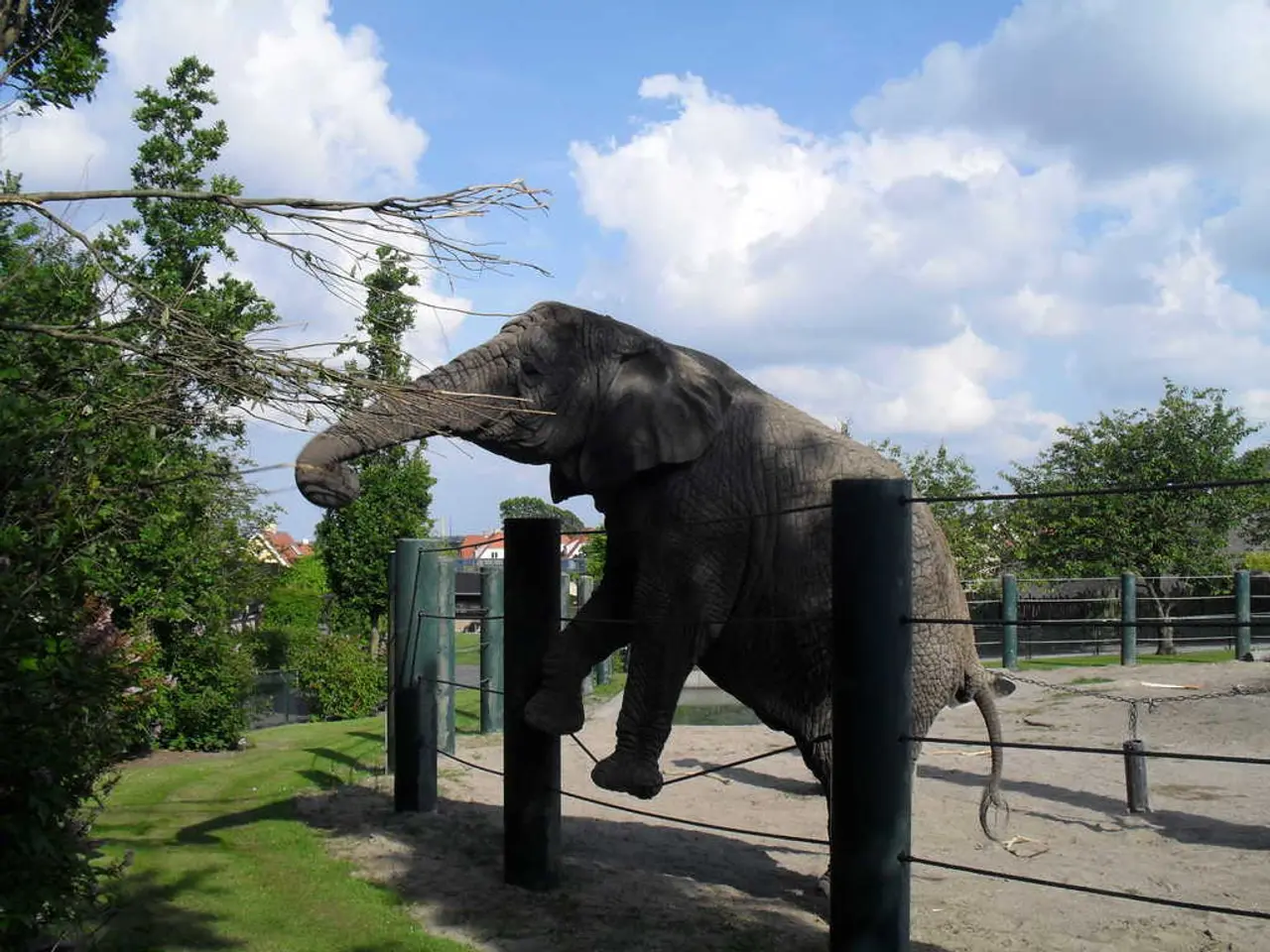'Out of Sight!': A Hidden Baby Elephant Nibbles on Sugarcane, Emerging Only After Concealing it Behind a Pole
In the heart of Southeast Asia, the coexistence of humans and wild elephants in Thailand presents a complex and evolving challenge. The country, home to an estimated 4,422 wild elephants as of 2025, is witnessing a significant shift in the way these two species interact, with consequences that are both adorable and alarming.
Recent incidents have highlighted the challenges of this delicate balance. Half of the wild elephants in Thailand now live in five forest areas that have become increasingly crowded, leading to encounters with humans that can be dangerous and costly. Last year, there were 4,700 recorded incidents involving elephants, resulting in the death of 19 people, 22 injuries, and damages to 594 farmlands and 67 properties.
The elephant, revered as a national symbol in Thai culture, is adapting to human spaces with increasing desperation. A baby elephant was caught eating sugarcane in a field in the northern region of Thailand, while another was recorded attempting to hide behind a narrow light pole when humans approached. The elephant's unsuccessful attempt at hiding provided an adorable picture that went viral on the internet.
However, this normalization of encounters reflects the diminishing space left for elephants and poses greater risks to safety. Traditionally, elephants might raid outdoor kitchens, but incidents have escalated to elephants entering grocery stores and other random places. This behaviour, reminiscent of a mischievous friend of Donald Trump according to one social media user, underscores the challenges of coexistence.
The challenges are multifaceted, involving ecological, social, and economic dimensions. Habitat loss due to expanding agriculture, development projects, logging, and plantations forces elephants to venture further into villages and towns in search of food. This habitat loss increases encounters with humans, leading to conflicts that can be fatal to both humans and elephants.
Efforts to improve wildlife corridors and mitigate conflict are underway but progress is slow. Measures like fencing plantations to protect crops might ironically fragment habitats further, restricting elephant movement and potentially heightening stress and conflict over time. There is a delicate balance between protecting human livelihoods and maintaining elephant corridors essential for their survival.
Cultural values also play a significant role in this coexistence. Elephants hold a revered place in Thai culture, with historic roles in agriculture, war, and tourism. Despite this reverence, the reality on the ground is a complicated coexistence marked by fear and economic losses, requiring nuanced solutions that respect both cultural values and the needs of local communities.
Without continued and improved efforts to protect elephant habitats and foster coexistence strategies, human-elephant conflict in Thailand is likely to escalate. The future of these majestic creatures, symbolic of Thailand's rich heritage, hangs in the balance.
The elephant's adaptation to human spaces, as evidenced by a viral photo of an elephant attempting to hide behind a light pole, showcases the challenges of coexistence in Thailand. This adorable yet concerning incident highlights the growing risks to safety, as the normalization of encounters reflects the diminishing space left for elephants. Meanwhile, the increasing number of conflicts, such as elephants entering grocery stores, echoes the complexities of managing social-media fodder and real-world pop-culture phenomena within the context of this delicate balance.




